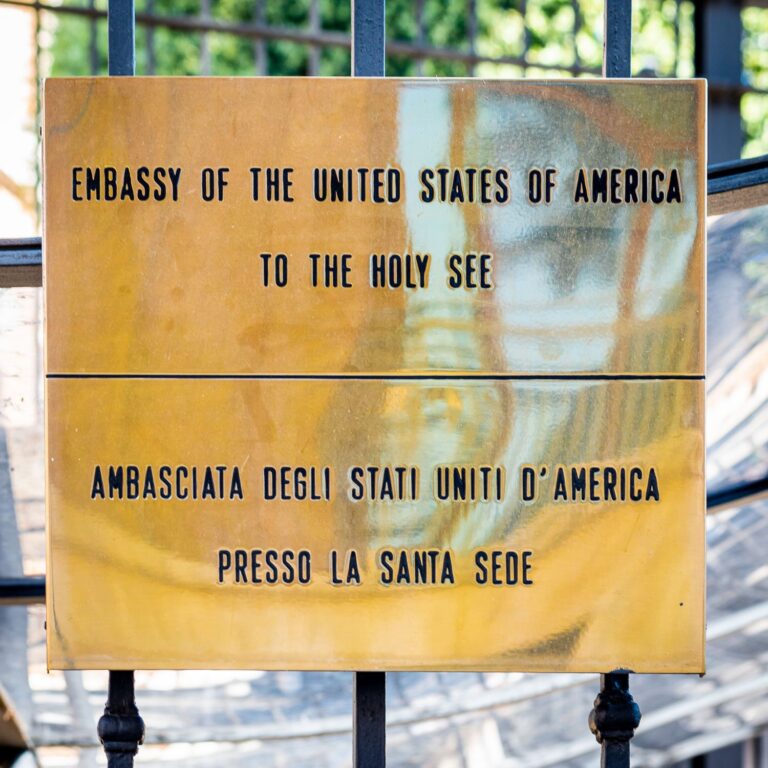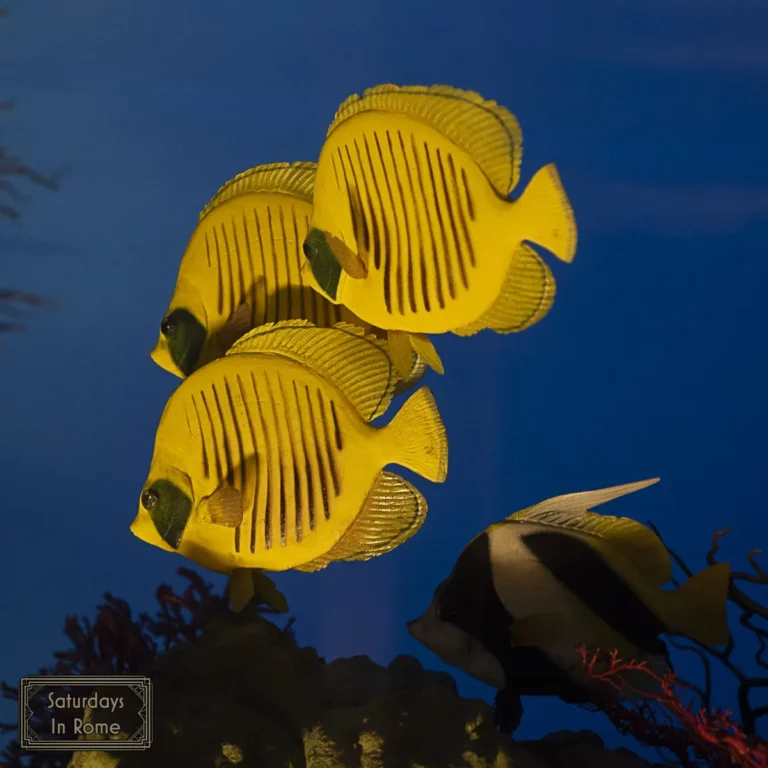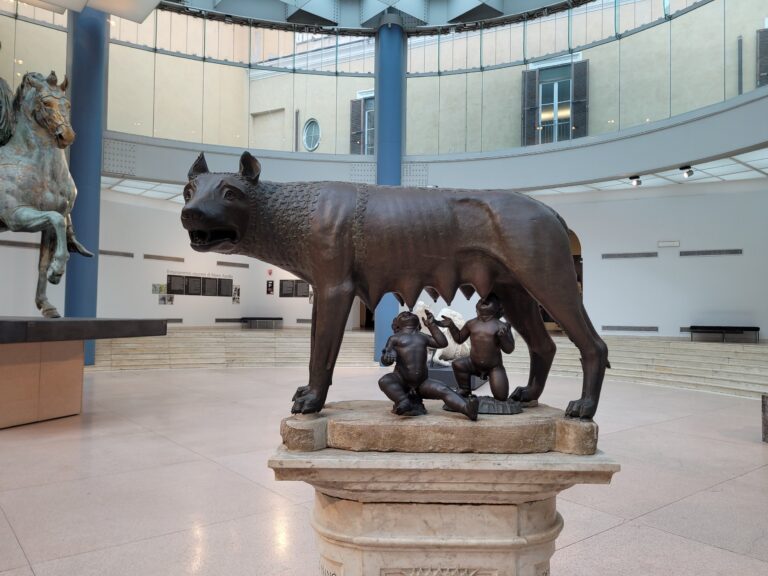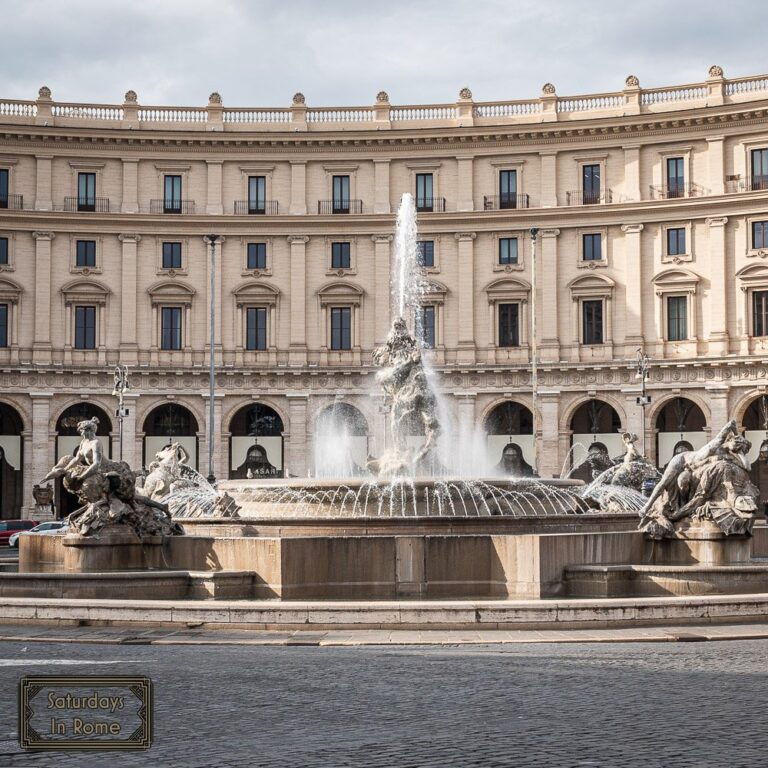The Papal Basilica of St. Paul Outside The Walls Endures
Experience the Papal Basilica of St. Paul Outside The Walls and see one of the Vatican’s major papal basilicas and one of the Seven Pilgrim Churches in Rome.
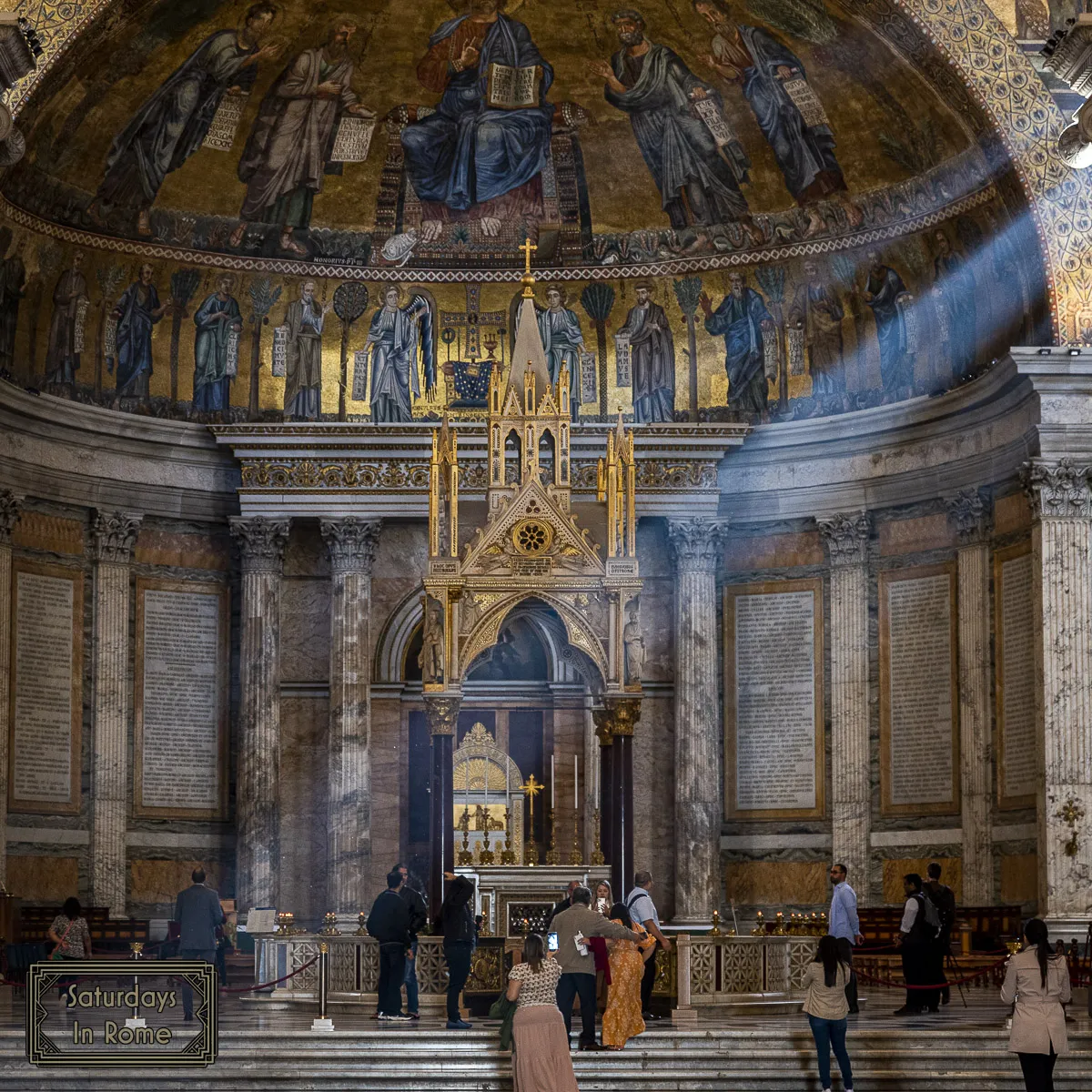
The Basilica of Saint Paul Outside The Walls (Basilica Papale di San Paolo Fuori le Mura) is also outside of Vatican City, but is owned by the Holy See and treated as if it is the headquarters of the diplomats of a foreign state.
Need Help Planning?
- Cheap Flights: Find The Most Affordable Flights.
- Accommodations: From 1 to 5 Stars And More.
- Car Rentals: Affordable Travel Across Italy.
- Sightseeing Tours: Explore Some Amazing Tours.
- Buying An eSIM: Stay Connected In Italy.
This post includes affiliate links.
Why Is It Called St. Paul Outside The Walls?
The name is such because the original basilica was built over the tomb of Saint Paul in 313 AD and Pope Sylvester consecrated it in 330 AD. It was too small to handle the growing number of pilgrims visiting the basilica, so a new basilica was built in 390 AD, which at the time was the largest one in Rome.
This history of this basilica is not without its excitement. Since it is “outside the walls,” in other words outside the Aurelian Walls, the basilica was damaged in the 9th century during a Saracen raid. The Pope fortified the protection of the basilica, the monastery, and the peasant housing, forming the town of Johannispolis which existed until 1348, when an earthquake totally destroyed it.
In 1823, a worker repairing the copper gutters of the roof started a fire that led to the near-total destruction of this basilica, which had preserved much of its original character for 1435 years. In 1825, Pope Leo XII issued orders that the basilica be rebuilt exactly as it had been when new in the fourth century and medieval mosaics and the tabernacle also be repaired and retained.
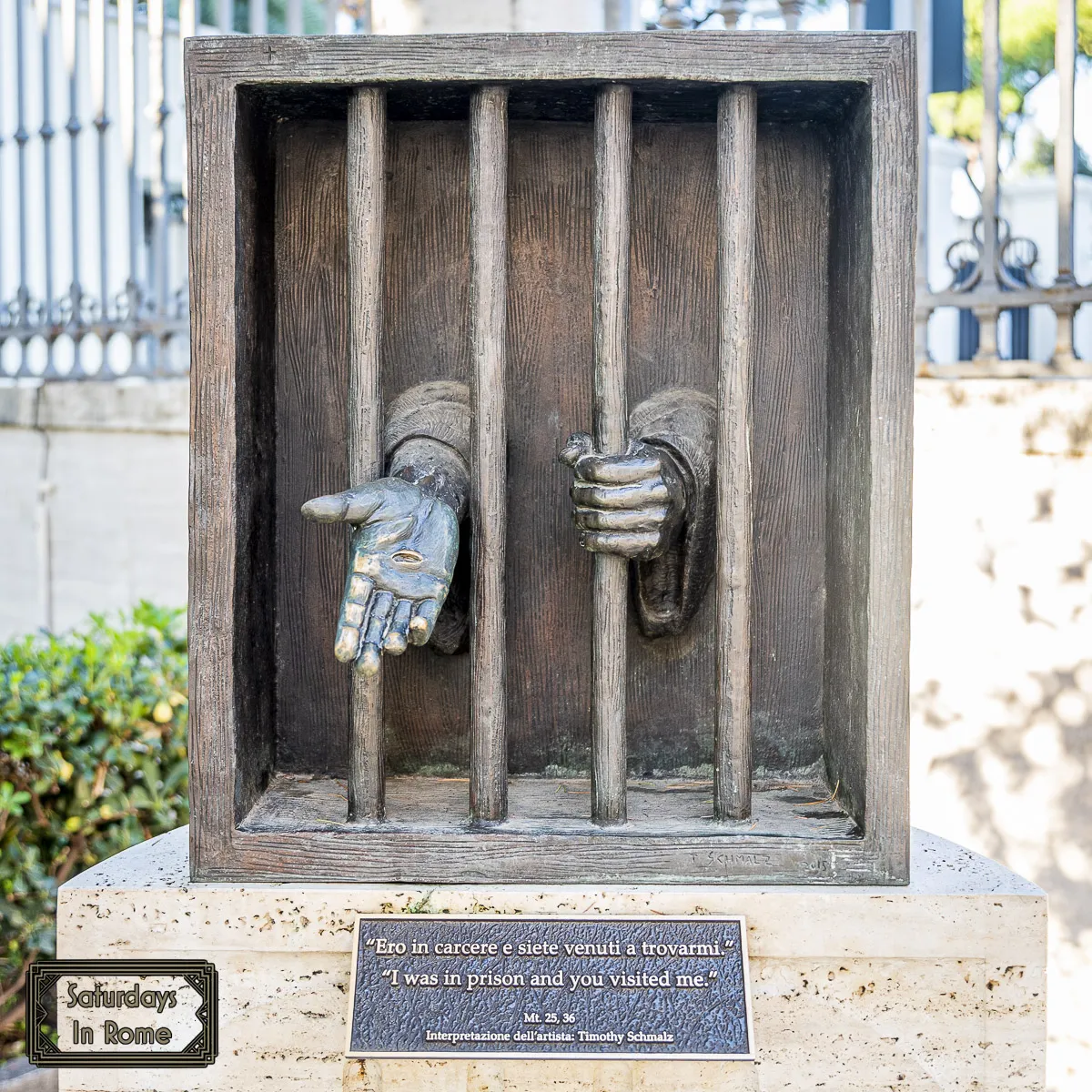
The Seven Pilgrim Churches Of Rome
The tradition of visiting all seven churches was started in order to combine conviviality and the sharing of a common religious experience through the discovery of the history of the early Saints. In the beginning, a few friends and acquaintances would gather before dawn and set out on their walk. At each church, there would be prayer, hymn singing and a brief sermon. The path covers twelve miles in Rome, but if you aren’t interested in walking that far, public transportation and taxis can make the journey that much easier.
The “Classic Seven Pilgrim Churches”
The official list of the Seven Pilgrim Churches changed in 2000 when Pope John Paul II had changed the 7 by removing San Sebastian and adding as a replacement the Sanctuary of the Madonna of the Divine Love shrine. When I was looking at the events of the Jubilee 2025, I noticed they list the classic seven churches as the official version, leaving off the Sanctuary. I could not find any information online regarding the change back, so I asked the tour guide if San Sebastian is on the list, and she said it was and that Pope Benedict had made the change. I still can’t find anything official on this, so I suspect this has more to do with some of the more devout respecting the original 7 and not the updated version. Whatever the reason, if you have any information, please let me know!
In addition to the Basilica of St. Paul Outside the Walls, there are six other basilicas, and optionally a shrine, that make up the Seven Pilgrim Churches of Rome.
- The Basilica of St. John Lateran
- The Vatican And St. Peter’s Basilica
- The Basilica of Saint Mary Major
- The Basilica of Saint Lawrence Outside the Walls
- The Basilica of the Holy Cross in Rome
- The Basilica of St. Sebastian Outside The Walls
- (Non-Classic) The Sanctuary of Our Lady of Divine Love
The Seven Churches Visitation is a Roman Catholic tradition to visit seven churches on the evening of Maundy Thursday during Lent. During the Seven Churches Visitation, the faithful visit several churches to pray before the Blessed Sacrament in each church.
The Basilica Of St Paul Outside The Walls
The Basilica is one of the more dramatic settings of the churches that I’ve visited in Rome. The scale is grand and made even more so by the importance of the tomb of Saint Paul, and how empty the space is. The entire basilica should be visited, but the two most surprisingly beautiful spaces are the Quadriportico and the Nave.
The Quadriportico
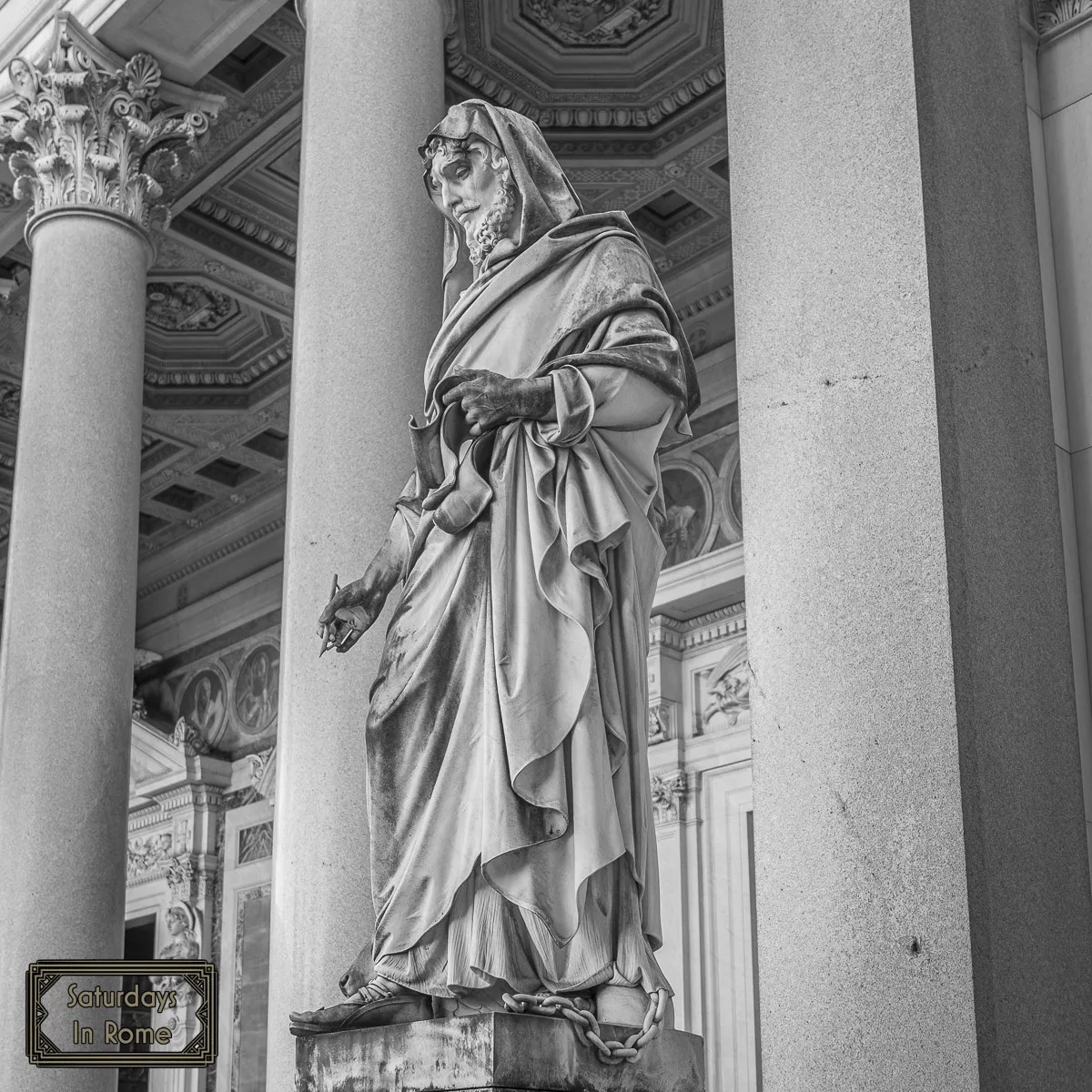
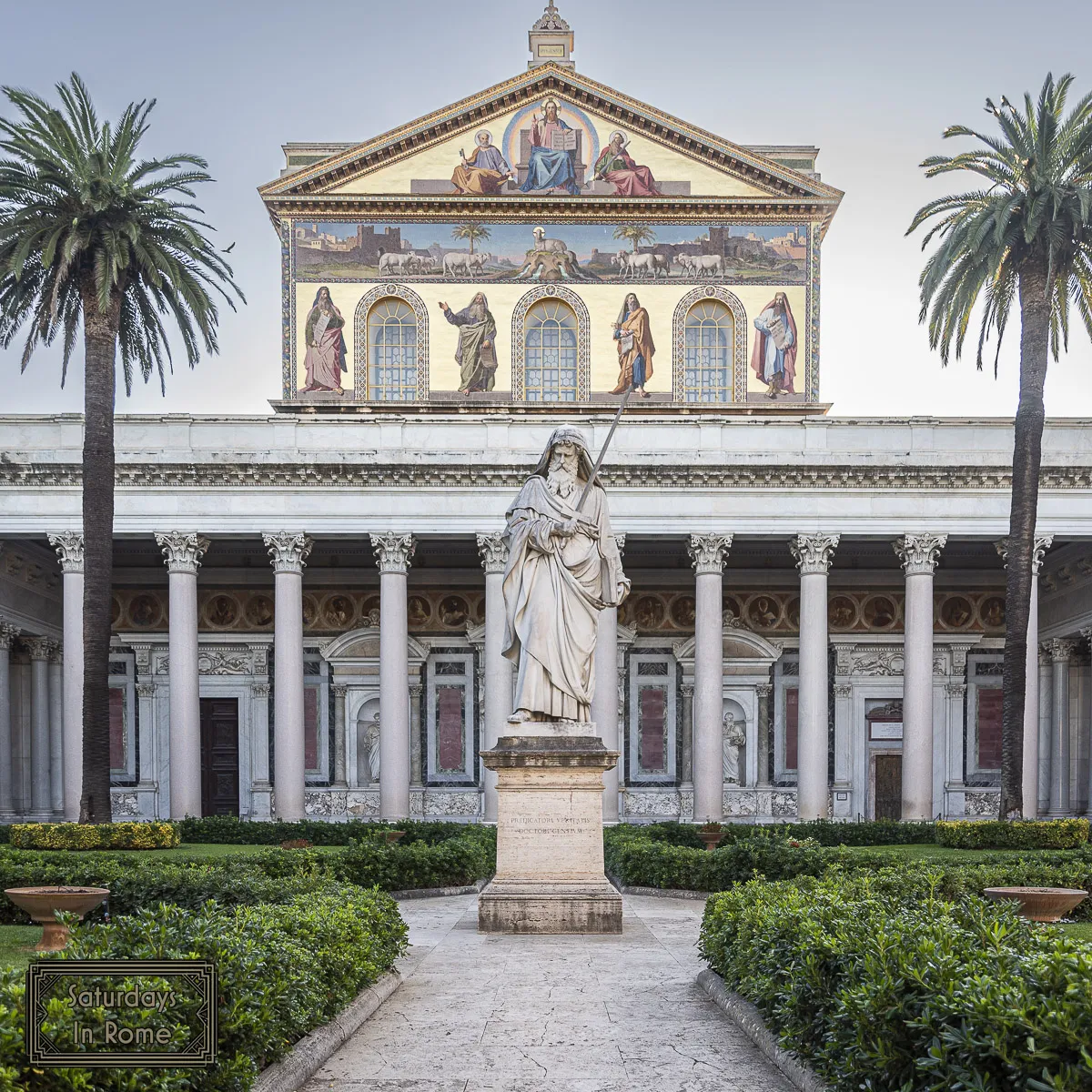
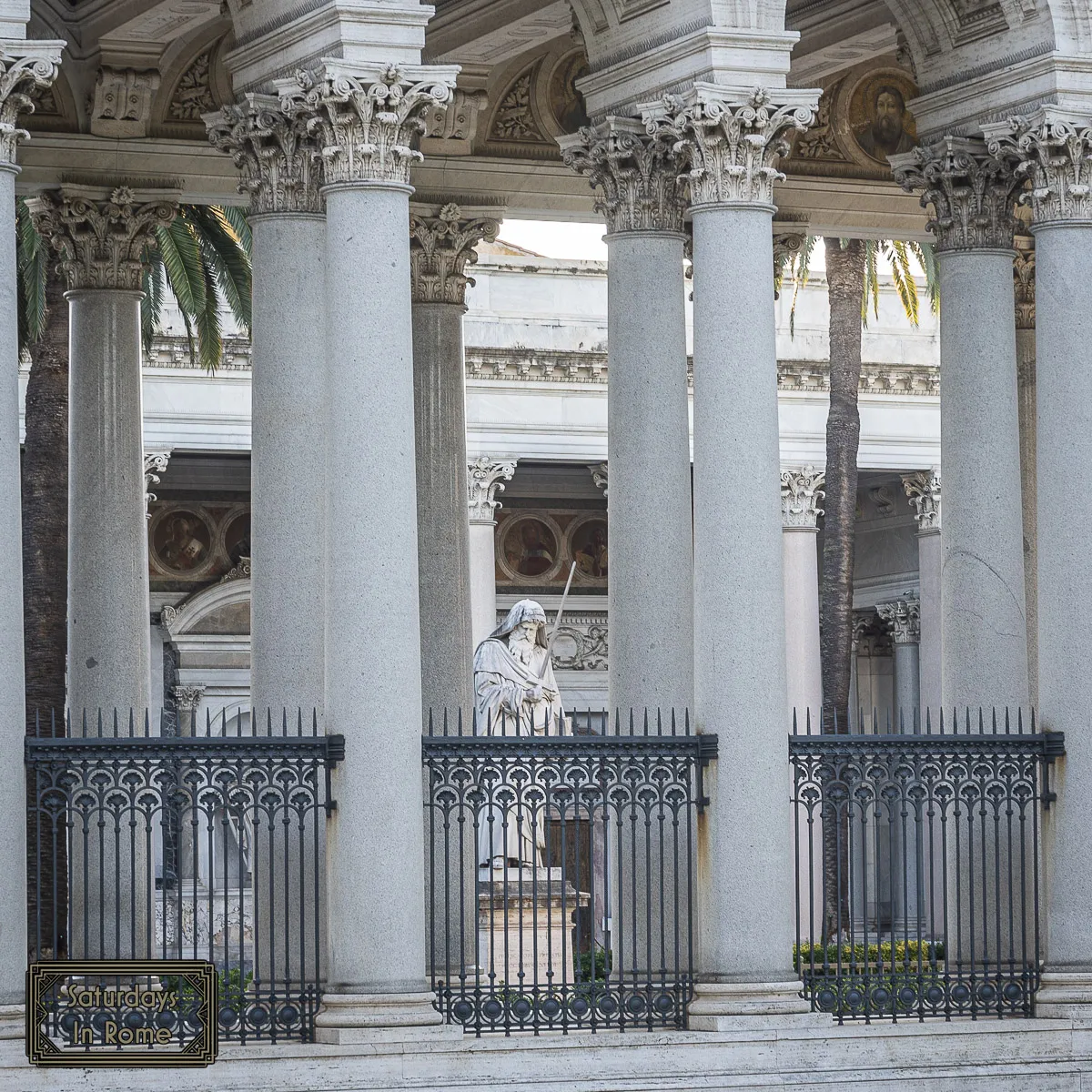
The quadriportico is a porticoed garden measuring 230 feet square surrounded by 150 columns of white granite from Montorfano, near lake Como. There is a statue in the center of the garden by Giuseppe Obici from around 1850. The statue represents St. Paul with a long sword in his right hand. representing the instrument of his martyrdom. In his left hand he holds the book of the epistles.
In the four corners of the garden (quadriportico) are pedestals only one of which is occupied by a statue. It is the work of Francesco Fabi-Altini (1893). It represents Saint Luke, companion of Paul and author of the Acts of the Apostles.
The central door is by Antonio Maraini, and was made between 1929 and 1931. It is a bronze double door weighing around 8 tons. The iconography aims to celebrate the preaching of the two apostles of Rome within the framework of a cross. Scenes from the lives of SS. Peter and Paul are portrayed on the two doors, and to my eyes, the top panels, given the timing of the creation, look to have iconography similar to others from the Fascist period.
The Nave
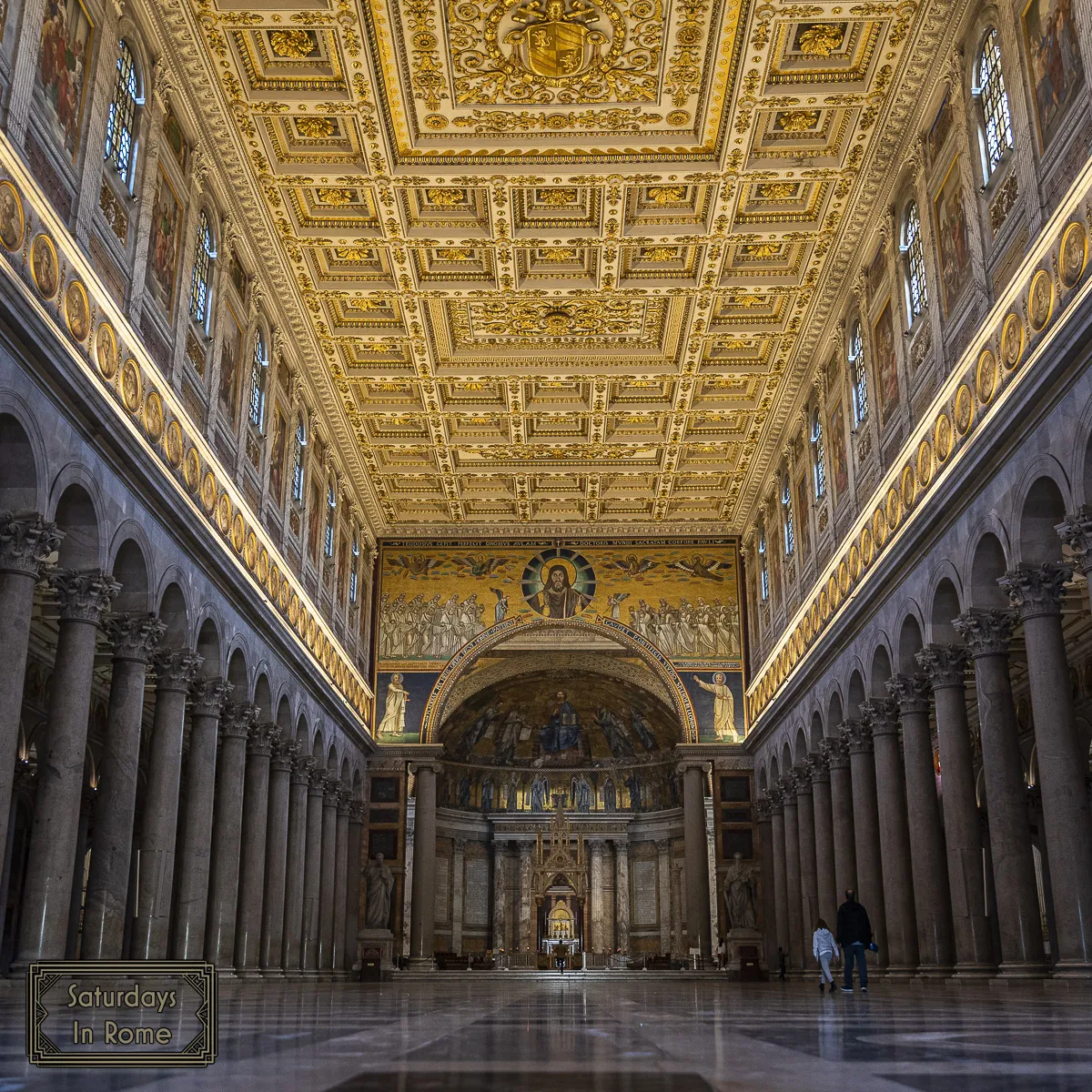
The nave was really surprising to be both because of its grand scale, but also because of its emptiness. The space is more than 440 feet long, around half as wide and 100 feet high. There are two outer aisles that are separated by four rows of twenty columns made of the same Montorfano granite. There are no chairs, pews or really anything else in the center space, and only a couple of short benches along the two outer aisles.
Two large statues of St Paul, by Salvatore Revelli, and of St Peter, by Ignazio Jacometti, are found near the columns of the arch. The other apostles, dating from 1882, are in the niches of the lateral walls. There is a chronological series of Pope portraits from the fifth century that were, for the most part, destroyed by the fire and remade between 1848 and 1876.
How To Reach The Church Of St Paul Outside The Walls
The easiest way to reach the basilica is on Metro B. You can get that at Termini station, or a stop closer if it is more convenient, and take it to the Basilica S. Paolo stop. There are also bus lines, #23 and #769, that will drop you right by the basilica.
Hours Of Operation
In addition to the Basilica, there is a Cloister, an archaeological area, a souvenir shop and a bar if you need a snack. The hours are:
- The Basilica is open every day from 7:00 am to 7:00 pm, free admission
- The Cloister is open every day from 9:00 am to 5:30 pm, admission € 4.00 (reduced € 3.00)
- The Souvenir Shop is open every day from 8:00 am to 7:00 pm
- The Sacristy is open every day from 8:00 am to noon and from 4:00 pm to 6:30 pm
- The Bar is Open every day from 8:00 am to 7:00 pm


